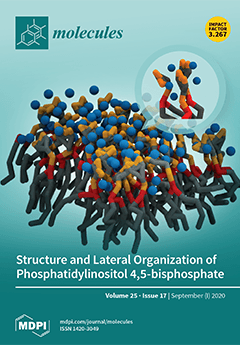The genus
Euphorbia is one of the largest genera in the spurge family, with diversity in range, distribution, and morphology. The plant species in this genus are widely used in traditional medicine for the treatment of diseases, ranging from respirational infections, body and
[...] Read more.
The genus
Euphorbia is one of the largest genera in the spurge family, with diversity in range, distribution, and morphology. The plant species in this genus are widely used in traditional medicine for the treatment of diseases, ranging from respirational infections, body and skin irritations, digestion complaints, inflammatory infections, body pain, microbial illness, snake or scorpion bites, pregnancy, as well as sensory disorders. Their successes have been attributed to the presence of diverse phytochemicals like polycyclic and macrocyclic diterpenes with various pharmacological properties. As a result,
Euphorbia diterpenes are of interest to chemists and biochemists with regard to drug discovery from natural products due to their diverse therapeutic applications as well as their great structural diversity. Other chemical constituents such as triterpenoids have also been reported to possess various pharmacological properties, thus supporting the traditional uses of the
Euphorbia species. These triterpenoids can provide potential leads that can be developed into pharmaceutical compounds for a wide range of medicinal applications. However, there are scattered scientific reports about the anticancer activities of these constituents. Harnessing such information could provide a database of bioactive pharmacopeia or targeted scaffolds for drug discovery. Therefore, this review presents an updated and comprehensive summary of the ethnomedicinal uses, phytochemistry, and the anticancer activities of the triterpenoids of
Euphorbia species. Most of the reported triterpenoids in this review belong to tirucallane, cycloartanes, lupane, oleanane, ursane, and taraxane subclass. Their anticancer activities varied distinctly with the majority of them exhibiting significant cytotoxic and anticancer activities in vitro. It is, therefore, envisaged that the report on
Euphorbia triterpenoids with interesting anticancer activities will form a database of potential leads or scaffolds that could be advanced into the clinical trials with regard to drug discovery.
Full article






